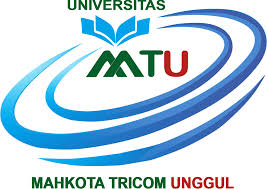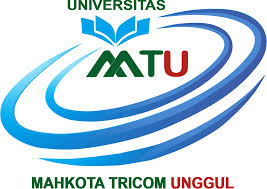Remote Sensing Studies in the Defense World Seen from a Mathematical Perspective
DOI:
https://doi.org/10.55927/fjst.v4i3.42Keywords:
Applications, Defense, Mathematics, Remote SensingAbstract
Remote sensing is a technology that can help humans in solving various problems faced. The use of remote sensing especially related to defense in a mathematical perspective is still little used. The purpose of this research is to provide information about remote sensing that is associated with mathematics and has uses in the field of defense. The method used in this research is a literature study. The application of this research can be used at any time, depending on the needs of the defense itself. The results obtained in this study are the use of remote sensing in defense seen from a mathematical perspective is still lacking so that there needs to be sustainable activities and innovation in its use.
References
Anees, S. A., Zhang, X., Shakeel, M., Al-Kahtani, M. A., Khan, K. A., Akram, M., & Ghramh, H. A. (2022). Estimation of fractional vegetation cover dynamics based on satellite remote sensing in pakistan: A comprehensive study on the FVC and its drivers. Journal of King Saud University - Science, 34(3). https://doi.org/10.1016/j.jksus.2022.101848
Badarudin, M. Supriyadi, A. Arief, S. & Prihanto, Y. (2024). Mapping The Potential Treath of Teorizing in The New Capital City (IKN) Based on K-Means Algorithm. Proceeding of Seminar Nasional GEOMATIKA BIG, (1).
Bagan, H., Borjigin, H., & Yamagata, Y. (2019). Assessing nighttime lights for mapping the urban areas of 50 cities across the globe. Environment and Planning B: Urban Analytics and City Science, 46(6), 1097–1114. https://doi.org/10.1177/2399808317752926
Clark, A., & McKechnie, J. (2020). Detecting banana plantations in thewet tropics, Australia, using aerial photography and U-net. Applied Sciences (Switzerland), 10(6). https://doi.org/10.3390/app10062017
Krichen, M., Abdalzaher, M. S., Elwekeil, M., & Fouda, M. M. (2024, January 1). Managing natural disasters: An analysis of technological advancements, opportunities, and challenges. Internet of Things and Cyber-Physical Systems. KeAi Communications Co. https://doi.org/10.1016/j.iotcps.2023.09.002
Sharma, R. C., Kumar, S., Kumar, S., Mann, M., Mayank, & Sharma, M. (2020). Photoacoustic remote sensing of suspicious objects for defence and forensic applications. Spectrochimica Acta - Part A: Molecular and Biomolecular Spectroscopy, 224. https://doi.org/10.1016/j.saa.2019.117445
Su, Z., Wan, G., Zhang, W., Guo, N., Wu, Y., Liu, J., … Wei, Z. (2024). An Integrated Detection and Multi-Object Tracking Pipeline for Satellite Video Analysis of Maritime and Aerial Objects. Remote Sensing, 16(4). https://doi.org/10.3390/rs16040724
Van Zyl, T. L., & Celik, T. (2021). Did We Produce More Waste during the COVID-19 Lockdowns? A Remote Sensing Approach to Landfill Change Analysis. IEEE Journal of Selected Topics in Applied Earth Observations and Remote Sensing, 14, 7349–7358. https://doi.org/10.1109/JSTARS.2021.3097446
Wayan Gede Krisna Arimjaya, I., & Dimyati, M. (2022). Remote sensing and geographic information systems technics for spatial-based development planning and policy. International Journal of Electrical and Computer Engineering, 12(5), 5073–5083. https://doi.org/10.11591/ijece.v12i5.pp5073-5083
Zhao, M., Zhou, Y., Li, X., Zhou, C., Cheng, W., Li, M., & Huang, K. (2020). Building a Series of Consistent Night-Time Light Data (1992-2018) in Southeast Asia by Integrating DMSP-OLS and NPP-VIIRS. IEEE Transactions on Geoscience and Remote Sensing, 58(3), 1843–1856. https://doi.org/10.1109/TGRS.2019.2949797
Downloads
Published
Issue
Section
License
Copyright (c) 2025 Mahmud Badarudin, Asep Adang Supriyadi, Syachrul Arief, Sepia Tapasya

This work is licensed under a Creative Commons Attribution 4.0 International License.


































